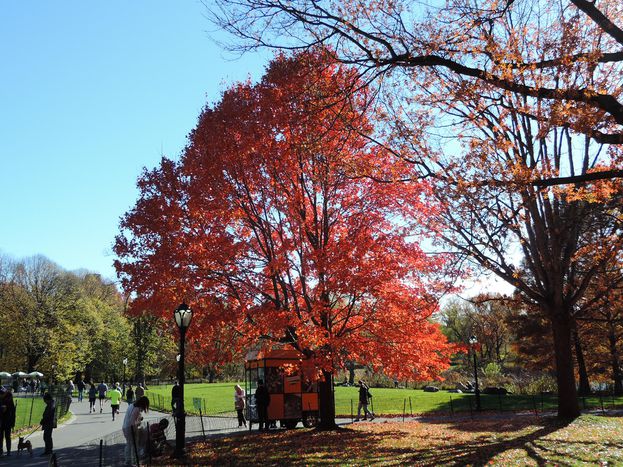
From concrete jungles to biodiverse cities
Published on
The word jungle is no more associated with trees and animals anymore. Cities have taken over the word and we now have the oxymoron called concrete jungles.
According to UNEP, cities occupy just 2% of the Earth's surface but their inhabitants use 75% of the planet's natural resources. Metropolitan cities in developing countries are especially becoming concretised and nearby forests are cut down to accommodate land for agriculture and infrastructure.
The loss of green cover and the depleting biodiversity is leading to an increased pollution problem in the cities as trees act as carbon and pollution sinks. A research study by Stockholm Resilience Centre has suggested that, ‘Production and consumption activities heavily concentrated in cities have contributed to some 80 percent of all greenhouse gas emissions; yet innovative solutions to combating climate change will also come from cities. With rich biodiversity, cities have enormous potential to mitigate climate change’
Humboldt Institute for Research has been working on urban biodiversity in Colombia for some time now. They define urban biodiversity as ‘all those forms of life and landscapes that live with us and suit our conditions within the city. All types of nature, including the constructed nature are a direct source of wellbeing. Biodiversity is not only present in territories with low human intervention. In urban environments, there is a built nature which also houses a source of biodiversity and human welfare.’
To understand the issue of urban biodiversity, URBES− Urban Biodiversity and Ecosystem Services is seeking to address scientific knowledge gaps on the contribution of urban biodiversity and ecosystem services to human well-being with an aim to support European cities to adapt to climate change and reduce their ecological footprints.
As the research identifies the infrastructural incapability of the city with a diminishing biodiversity, the next would be to look for sustainable solutions that exploit the existing infrastructural capacity in a sustainable way. "The innovation lies not so much in developing new infrastructural technologies but to work with what we already have. The results are often far cheaper and more sustainable as well," feels, Thomas Elmqvist, scientific editor of the assessment by Stockholm Resilience Centre.
A study conducted in Paris in 2012 has suggested that it is important to connect locals with their cities if they are to be made aware of the conservation of green spaces. The study points out that ‘to improve the efficiency of nature-related activities aiming at increasing individual awareness: first, being local appears to be a key factor for involving people. Second, the activities should aim to give local residents a central role through activities combining elements such as science, personal observations, games, and emotions. Finally, we suggest that to increase the efficiency of conservation education, it is important to develop long-lasting programs that integrate observations and interaction with nature as closely as possible into people's daily lives.’
Lastly, conserving wildlife plays an important role in the context of urban biodiversity. Matt Palmer, Department of Ecology, Evolution and Environmental Biology at Columbia University writes that, ‘City dwellers with limited exposure to wild nature don’t know what to expect from urban wildlife, so they are more open to cultural narratives and information from others in shaping their reactions.’ He suggests that we can bring back urban wildlife by natural recovery, carefully designed landscapes, or even purposeful introduction and take an active part in storytelling that includes wildlife so these beings are not forgotten.
These are just some of the ways in which citizens can play a positive role in preserving and enhancing the urban biodiversity of their cities.
Note: Contribution from Pari Trivedi, from India



